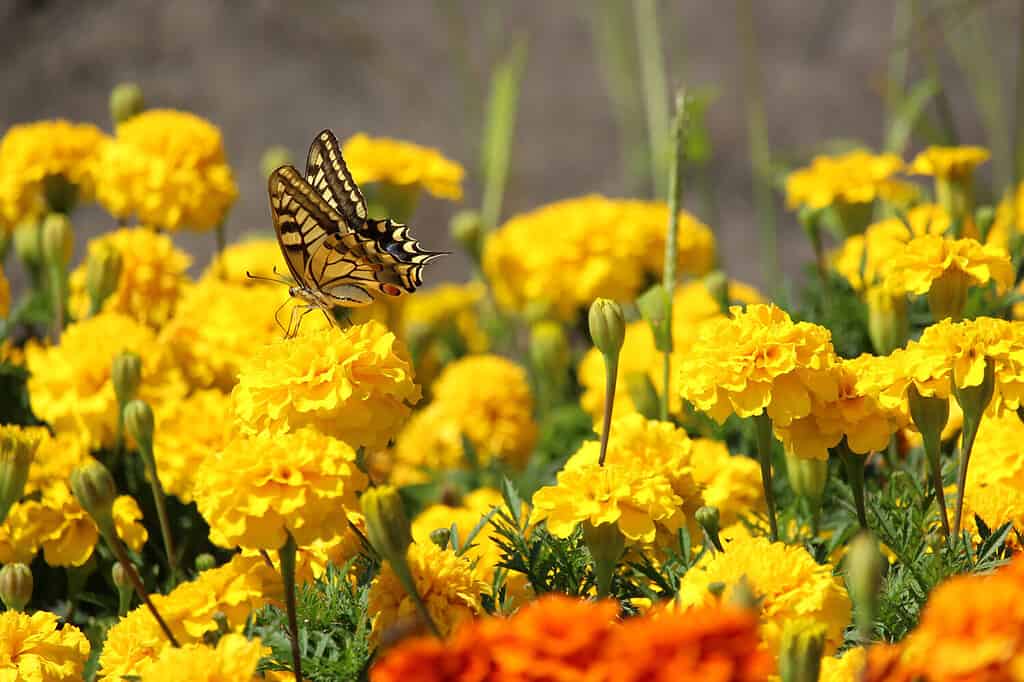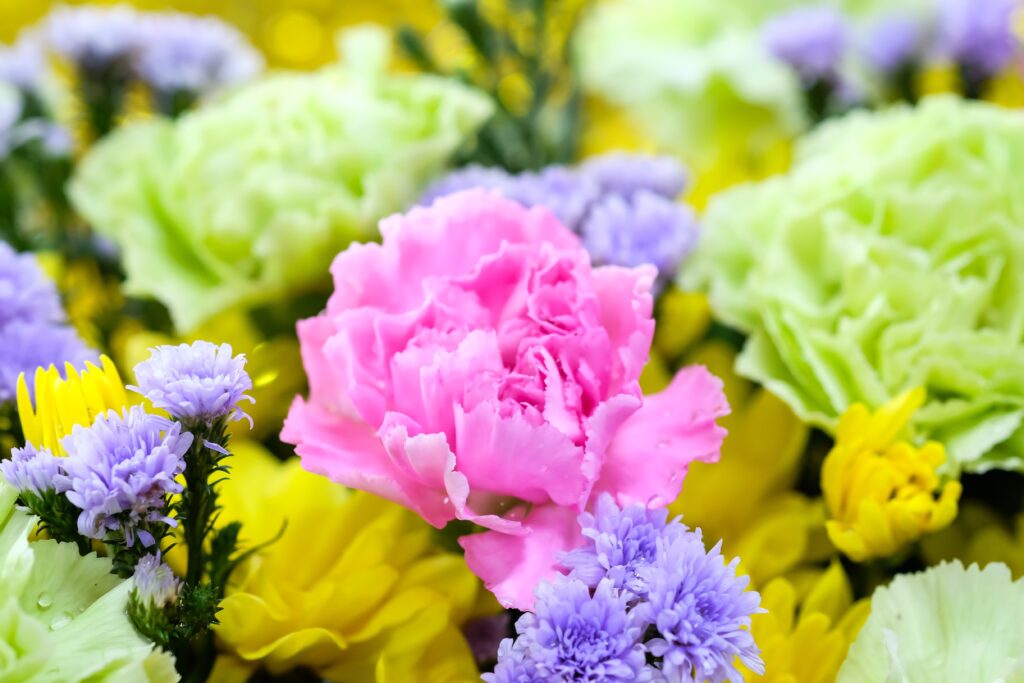January, the first month of the year, arrives with renewed hope, fresh starts, and resolutions! It may feel like a long, bleak month in some climates, but in others, it is the height of summer. It spans Capricorn and Aquarius. People with January birthdays are Capricorns – the hard workers of the zodiac who are ambitious, determined, and just a little materialistic! Or, they may be assertive, analytical Aquarians with a touch of eccentricity.
Those born this month are also born leaders with bags of charm, huge hearts, and a cool head when things get tough.
Like some other months, January is also blessed with two birth flowers, the snowdrop and the flower we are going to look at in detail here – the carnation.
Carnations are gorgeous fluffy flowers that remain a firm favorite for adorning houses throughout the year and for special occasions, including weddings and birthdays. They have a light, sweet scent and are available in a huge range of colors, making them superbly versatile and the go-to flower for millions of bouquets every year. Let’s find out more about them and what they stand for.
The Origins of Carnations

Carnations are a native flower of Greece.
©Ana Fidalgo/Shutterstock.com
The scientific name for carnations is Dianthus caryophyllus, and they are a member of the Caryophyllaceae family of flowering plants, often called the pink family or just the carnation family. They are herbaceous annuals or perennials, meaning they die off above ground each year. At the most, they are about 30 inches tall, and the leaves are either a greyish-green or a blue-green.
Their native home probably extended from Greece through Asia to Persia and the Ancient Greek philosopher referred to them as the flower of the gods! This is the origin of their scientific name, Dianthus, derived from Dios Anthus, meaning flower of the gods. They were woven into crowns for athletes. Their name may have even been the origin of the word ‘coronation.’ However, the original flower would have looked very different from the carnation we recognize today. Thousands of years of cultivation have changed this bloom significantly. The Romans referred to them as the flower of Jove, or Jupiter, who was the chief god.
Legends About Carnations
Not everything that you read about carnations is fact! The bloom is steeped in legend and myth which only adds to its charm. The Goddess Dianne apparently came across a shepherd boy who was so handsome that she had to tear out his eyes to stop herself from being seduced by him. His eyes were thrown to the ground, and these plants grew from the spot, which explains the French name for carnations, Oeillet, which means ‘little eyes’.
Another French legend has it that the carnation originated in Spain but was transported to Tunis where it was used to make medicinal tea. It was brought to France from there during the 1200s and was known for many years as ‘Souvenir de Tunica.’
A final legend claims that the flower sprouted from the blood of Ajax, the Greek mythological hero, as he lay dying.
What Do Carnations Symbolize?

Carnations symbolize love, fascination, and distinction.
©antonina_jurii_mazokha/Shutterstock.com
So, we know that carnations have been around for a long time and have been revered by our ancestors for thousands of years. Now, let’s take a closer look at what they symbolize.
Divine Love
Vases of carnations are commonly seen in northern Italian Renaissance paintings. They were placed there to represent divine love. This is not surprising given the bloom’s ancient connection with the Gods. Carnations are also the flower of choice for funeral flowers in France, showing their connection to the afterlife.
Earthly Love and Devotion
Carnations are included in so many wedding bouquets because they represent devotion. They are also used in buttonholes and table decorations for weddings. However, it is not just about romantic love. They also represent love between children and mothers and are often seen in Mother’s Day arrangements. In South Korea, children give them to their parents on Parents’ Day to show how much they love them.
Fascination
With their ruffled petals and seemingly endless color palettes, carnations are a source of endless fascination. As well as paintings and songs, several famous poems make reference to this flower. One notable example is ‘A Song to David’ by English poet Christopher Smart. He lived between 1722 and 1771, and the poem is thought to have been written when he was confined in a lunatic asylum. He refers to the flowers in the 60th stanza “For ADORATION grow; And, marshaled in the fenced land, The peaches and pomegranates stand, Where wild carnations blow.”
Distinction
Distinction can be something that makes someone stand out from the crowd, or it can mean excellence. Thanks to their unique petal shape, carnations certainly stand out.
Perhaps this is also why they are traditionally worn by students at Oxford University in the UK for examinations. According to the university’s information for students, they wear a white carnation for their first examination, a pink carnation for their intermediate examination, and a red carnation for their final examination.
What Do Different Carnation Colors Mean?

Different color carnations mean different things.
©Alis Magic of Photos/Shutterstock.com
Original carnations were only a pinkish purple, but things have changed a lot since then! During the Victorian era, they were used as a floral messaging system with different colors, meaning very clear and very different things! It was a secret ‘flower language’ developed by, among others, Lady Mary Montagu, a poet and aristocrat who married the British Ambassador to Turkey. Victorian households even kept ‘flower dictionaries’ so that they could work out what a particular bouquet meant!
Let’s have a look at what these colors mean.
Pink Carnations
Pink is a gentle and maternal color and usually symbolizes fondness and motherly love. Legend has it that these flowers bloomed where the tears of the Virgin Mary fell onto the earth when she was weeping for Jesus as he was crucified. As an extension of this, they have also grown to symbolize thankfulness, especially thankfulness for a mother’s love. In 1907, Anna Jarvis of Philadelphia chose them as the flower to represent Mother’s Day. These days, they are included in thousands of Mother’s Day bouquets worldwide.
White Carnations
White carnations also symbolize motherly love and are associated with Mother’s Day. They also stand for innocence, purity, and good luck. Their inclusion in bridal bouquets, wedding buttonholes, and engagement flowers confers good luck in the relationship.
Red Carnations
Red carnations also symbolize luck but can mean deep admiration, love, and affection. This vibrant color is often associated with passionate love, and red flowers are given to much-loved partners and spouses. This is the color most often associated with romantic love.
Purple Carnations
This color is associated with a more complicated theme – capriciousness. They are often chosen for people who can be unpredictable or impulsive. Perhaps they could be sent before your friend’s next adventure or to say that you love how they always keep you on your toes!
Yellow Carnations
The interpretation of yellow carnations is more problematic! During Victorian times, they were associated with rejection. Potential suitors would not have been happy to receive them because it meant a definite no. They also mean disappointment and may be a good choice if you are trying to say sorry.
Striped Carnations
On the whole, striped carnations had ambiguous connotations. They symbolized rejection but in a gentler way than a yellow bloom. So rather than ‘no way’ they mean ‘I’m sorry but it’s a no’.
Green Carnations
These may not have appeared in the official flower dictionaries, but they were highly symbolic nevertheless. The famous Victorian Anglo-Irish playwright, novelist, and poet Oscar Wilde asked his friends to wear them, and they were seen as symbols for gay men in 19th-century Europe.
Thank you for reading! Have some feedback for us? Contact the AZ Animals editorial team.








